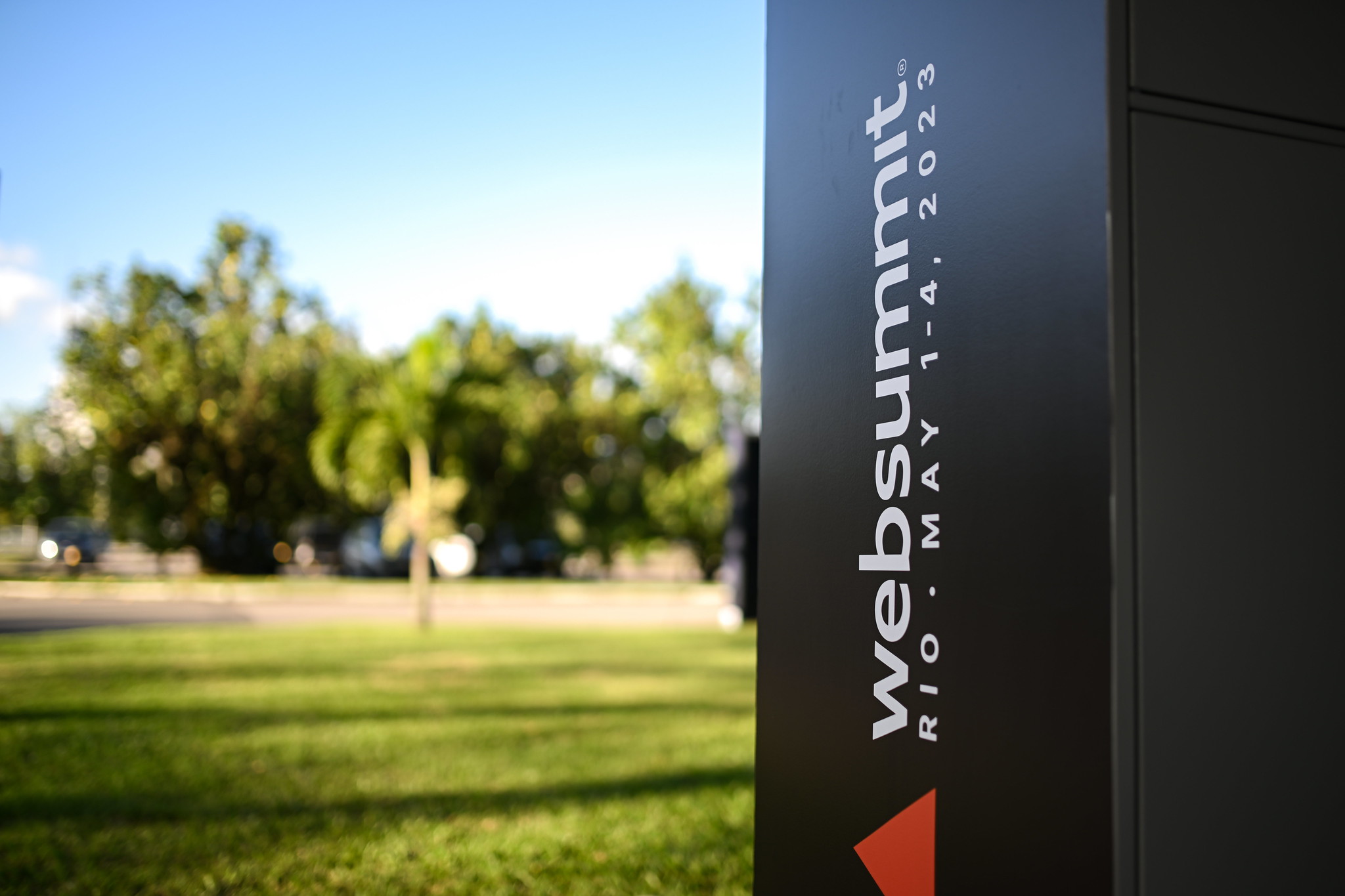
Forests, drones and the future of the planet

How can society save the world’s rainforests? By resisting threats as best as possible… And by using drones.
Meet some of the activists, founders, scientists and investors fighting to save the planet who spoke about climate solutions at Web Summit Rio this week.
The Amazon rainforest is facing multiple threats at the same time
“We have, throughout my lifetime, faced a lot of threats, particularly from oil companies,” said Indigenous Youth Collective of Amazon Defenders co-founder Helena Gualinga, speaking at Web Summit Rio.
Helena continued: “My work today is very much around: how do we protect the Amazon rainforest from extractivism, not just oil, but any kind of extractivism coming into our territories with extreme force, violating human rights, and, in general, being very destructive?”
“Every day, the battle is different, but the purpose is the same. What we are asking for is that Indigenous people have sovereignty over our lands.”
Helena Gualinga, co-founder of Indigenous Youth Collective of Amazon Defenders
Helena described the impact private companies have had on communities when entering a territory without consent, often with government backup: “And then they militarize the territories.”
“Every day, the battle is different, but the purpose is the same. What we are asking for is that Indigenous people have sovereignty over our lands.”
In practical terms, the activist described working on a recent referendum to force out an oil company, which the majority of Ecuadorians voted in favor of. And there is precedent for resistance in the country, with cases of oil companies being pushed out of the rainforest from decades ago.
“Over 20 years ago, when no one was paying attention to the Amazon, no one was paying attention to Indigenous people. We weren’t able to just knock on the doors of the justice system in our own country. We had to go to international mechanisms to get protection.”
“The resistance has been there for decades already, and it’s still very much strong and solid,” added Helena.
Brazil is poised to become the world’s largest exporter of carbon removal
Last year, Mombak inked a deal with Microsoft that represented one of the largest ever nature-based deals to remove 1.5 million tonnes of carbon from the earth’s atmosphere.
Mombak co-founder and CEO Peter Fernandez thinks the Microsoft deal is “their single largest carbon removal offtake to date”, pledging that the company was going to be “the Saudi Aramco of carbon removal”.
At Web Summit Rio, the co-founder and CEO went on to say that “humanity’s single largest opportunity today to remove carbon from the atmosphere is by doing reforestation in Brazil, specifically in the Amazon. And so [Mombak] decided to try to reforest the Amazon”.
“Climate change is the most capital-intensive problem in human history, other than the industrial revolution and world wars.”
Peter Fernandez, co-founder and CEO of Mombak
Peter described the vast investment required to take on this task: “This is an incredibly capital-intensive thing to do. We came from a capital-light software background, and now we’re literally buying deforested land in the Amazon and planting forests on it to do our work.”
The CEO added: “I’ve actually come to understand that climate change is the most capital-intensive problem in human history, other than the industrial revolution and world wars. So that’s the kind of company that we’re building now, using everything that we learned from the tech industry about how to scale really fast and really ambitiously.”
‘Climate journalism gives people hope’
Climate coverage focusing on solutions gives people hope. So says Peter Prengaman, the global climate and environmental news director of the Associated Press.
“When you can tell people ‘hey, here’s something that’s working and could help on a larger scale make the situation better’…We actually see that readership goes up for those kinds of stories. People want the solutions – they don’t just want the doom and gloom,” said Peter at Web Summit Rio.
But the news director stressed the willingness of climate deniers to shoot down solutions, some even going as far as to say global warming is a good thing.
“Stories have to be accessible to people, and I think one of the errors of climate journalism in the last 10 to 15 years was too much focus on science. Stories should be about people, because as humans we’re just really curious about what other people are doing.”
Peter Prengaman, global climate and environmental news director of the Associated Press
“How do we confront that? I think we look at those examples where people say, ‘hey, this is a good thing’, and show why, even if you live in a place that’s frozen and it warms up a little bit, that might be good for you as an individual, right? You might enjoy a little bit better weather. But it’s bad for the planet, and that’s part of what we have to do. We have to explain. We have to describe why tenths of a degree matter a great deal.”
Peter’s comments come amid a string of recent global monthly high-temperature records, which have led some scientists to fear that the planet could be transitioning into a new phase of accelerated climate change.
But, according to Peter, some climate coverage focuses too intensively on the science behind the climate crisis.
“Stories have to be accessible to people, and I think one of the errors of climate journalism in the last 10 to 15 years was too much focus on science. Stories should be about people, because as humans we’re just really curious about what other people are doing.”
This disproportionate focus on the science behind global warming can actually have an adverse effect on the environment, says Peter, allowing people to focus exclusively on the numbers behind climate change rather than the risks it poses to everyday life.
“I think one of the dangers when you cover science and cover climate is you start to know the stuff so well that you forget to step back. Not everybody is that focused on it.”
How do we reverse deforestation? Drones!
The UN has said that in order to reverse the degradation of ecosystems worldwide, countries need to restore one billion hectares of forest and other natural lands by 2030.
“At the current pace, we’re only going to reach five percent of [this target],” says Morfo co-founder and CEO Grégory Maître, adding that Brazil holds one-sixth of the world’s degraded land.
In the last 40 years, forest cover in Brazil went from 75 percent of the territory to just 60 percent.
“This is a pity but this is also a huge opportunity for Brazil,” said Grégory, who explained that Morfo’s drones drop seed pods down on these deforested lands – including the Amazon Rainforest – covering about 50 hectares per day, which is 50 times more than what can be otherwise covered.
Among the 19 projects the startup has running in Brazil, Africa, and French Guiana is Mata Atlantica, a former sugar plantation that lay empty for 15 years but has started to regenerate in the last nine months thanks to drone delivery of native seeds.
Can investment help with climate action? It depends
Investment can help mitigate the climate crisis. It just depends on what kind of companies are being invested in, ranging from those that eschew high-tech in favor of nature to those that are being hit hardest by climate change.
Ana Luiza Squadri, CFO of re.green, emphasized the immense potential of companies providing nature-based solutions in tackling climate change, stating that “trees are the best technology we have to suck carbon from the atmosphere”.
Ana explained that by restoring degraded pasturelands in Brazil, re.green is able to capture carbon and enhance biodiversity at a fraction of the cost of technological carbon removal methods.
The CFO added that, by carefully selecting restoration sites (where trees are planted), it is possible to capture “eight to 10 times more carbon than if you choose it by chance”.
Small businesses, particularly women-owned ones, are most vulnerable to the effects of climate change, as pointed out by Stone chief impact officer Carolina da Costa, whose company specializes in financing micro and small business owners.
“In Brazil, we have 13 million small businesses, which is like 20 percent of the workforce … 70 percent of companies are small businesses, and almost half of them are led by women,” stated Carolina.
“Together with the US International Development Finance Corporation (DFC), we managed to attract US$500 million that will go directly to small businesses, and more specifically, to target women.”
Web Summit Rio has plenty more climate talks on our planet:tech stage. Check out the full schedule for Web Summit Rio 2024 here.
Main image of outdoor Web Summit Rio 2024 branding: Stephen McCarthy/Web Summit (CC BY 2.0)

